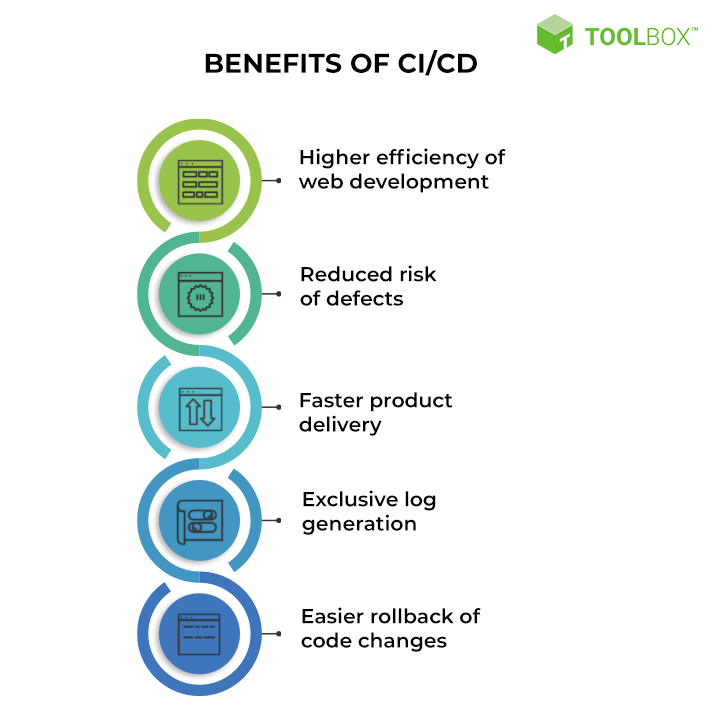Continuous Integration (CI) and Continuous Deployment (CD) have become integral components of modern software development. By automating the process of code integration, testing, and deployment, CI/CD pipelines enable teams to deliver high-quality software faster and with fewer errors. In this article, we’ll explore the importance of CI/CD, how these tools work, and their benefits for development teams.
What is Continuous Integration (CI)?
Continuous Integration is the practice of frequently integrating code changes from multiple developers into a shared repository. Each integration is automatically verified by running tests to catch issues early. The goal is to detect and resolve integration bugs as quickly as possible, reducing the chances of errors accumulating over time. Popular CI tools like Jenkins and CircleCI help automate this process, making it easier for teams to merge code changes confidently.
What is Continuous Deployment (CD)?
Continuous Deployment is the next step after Continuous Integration. In a CD pipeline, every change that passes automated testing is automatically deployed to production without manual intervention. This ensures that new features, bug fixes, and improvements are delivered to users quickly and reliably. Tools like GitHub Actions and AWS CodePipeline are commonly used to build robust CD pipelines.
The Difference Between Continuous Delivery and Continuous Deployment
It’s important to distinguish between Continuous Deployment and Continuous Delivery. While both practices involve automated testing, Continuous Delivery ensures that changes are ready for deployment but still require manual approval before going live. Continuous Deployment, on the other hand, automatically pushes every change that passes the tests directly to production.
The Benefits of CI/CD for Development Teams
Implementing CI/CD pipelines offers numerous benefits for development teams, including faster delivery times, improved collaboration, and higher-quality software. By automating testing and deployment, teams can catch bugs earlier in the development cycle and reduce the risks associated with manual releases.

Faster Time to Market
One of the most significant advantages of CI/CD is the ability to deliver new features and updates faster. With automated integration, testing, and deployment, developers can focus on writing code rather than spending time on manual testing and releases. This results in shorter development cycles and quicker time to market.
Improved Collaboration and Transparency
CI/CD also promotes better collaboration among development, testing, and operations teams. By automating repetitive tasks and integrating code more frequently, developers can focus on their core responsibilities. CI/CD pipelines also provide real-time feedback, helping teams identify issues early and ensure that everyone has visibility into the deployment process.
Minimized Risk of Human Error
Manual deployments are prone to human error, which can lead to production outages or software failures. CI/CD pipelines reduce the risk of such errors by automating the deployment process, ensuring that every change is thoroughly tested before going live. Automated rollbacks can also be implemented in case an issue arises, minimizing downtime.
Popular CI/CD Tools
There are numerous CI/CD tools available that cater to different workflows and team needs. Some of the most widely used tools include:
- Jenkins: An open-source automation server that supports building, testing, and deploying code.
- CircleCI: A cloud-based CI/CD tool that integrates with GitHub and Bitbucket for streamlined workflows.
- GitHub Actions: A CI/CD platform built into GitHub, allowing teams to automate workflows directly within their repositories.
- AWS CodePipeline: A fully managed CI/CD service that automates release pipelines for deploying updates in the cloud.
Challenges of Implementing CI/CD
While CI/CD offers many benefits, there are also challenges to consider. Setting up and maintaining CI/CD pipelines requires expertise and initial time investment. It’s crucial to configure tests properly to ensure that changes don’t break production environments. Additionally, monitoring and optimizing the pipeline as projects grow can be complex, requiring continuous attention to ensure efficiency.
Conclusion
CI/CD is a powerful approach to modern software development, enabling teams to deliver high-quality products faster and with more reliability. By automating integration, testing, and deployment, CI/CD pipelines help teams collaborate more effectively, reduce errors, and improve overall productivity. As software development continues to evolve, adopting CI/CD practices will be essential for staying competitive in today’s fast-paced digital landscape.


